Abstract
This study on Kenyan schoolchildren aims to elucidate the effect of contact with environmental mycobacteria on the development of specific delayed hypersensitivity. A series of 12 skin test reagents was employed; eleven of them were prepared from extracts of living mycobacteria and the last was the P.P.D. RT 23. Eight of the new tuberculins were prepared from mycobacteria recovered from the East African environment. A total of 8641 tests were carried out on 4320 children between the ages of 6 and 17 years in four townships. Two of these townships were in fertile agricultural areas and two were in the desert. Just over 80% of the children had received BCG immunization The results obtained showed that increasing age, geographical locality and BCG immunization all had a profound effect, and socioeconomic background had some effect, on the pattern of reactivity to the various reagents. The rationale behind the use of the series of new tuberculins and the results obtained with them are discussed in relation to the interacting effects of the factors complicating these results.
Full text
PDF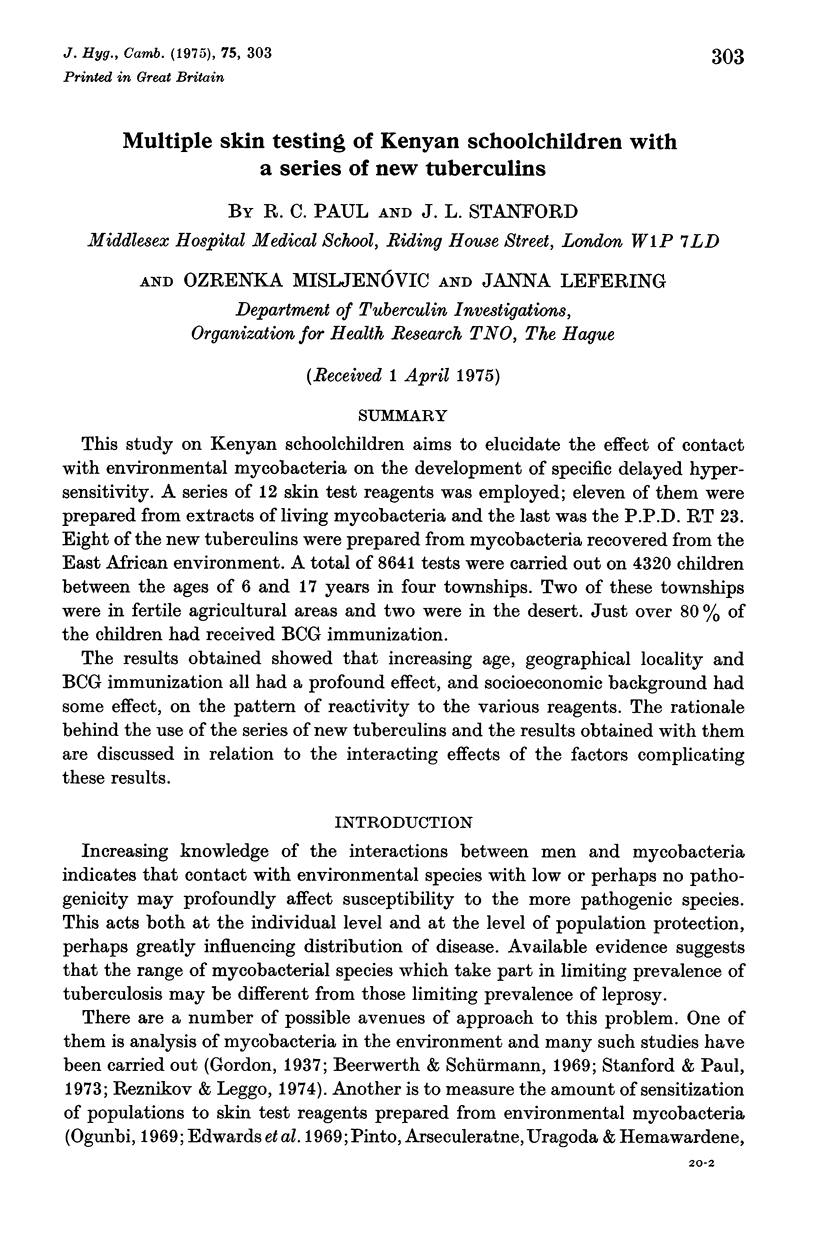
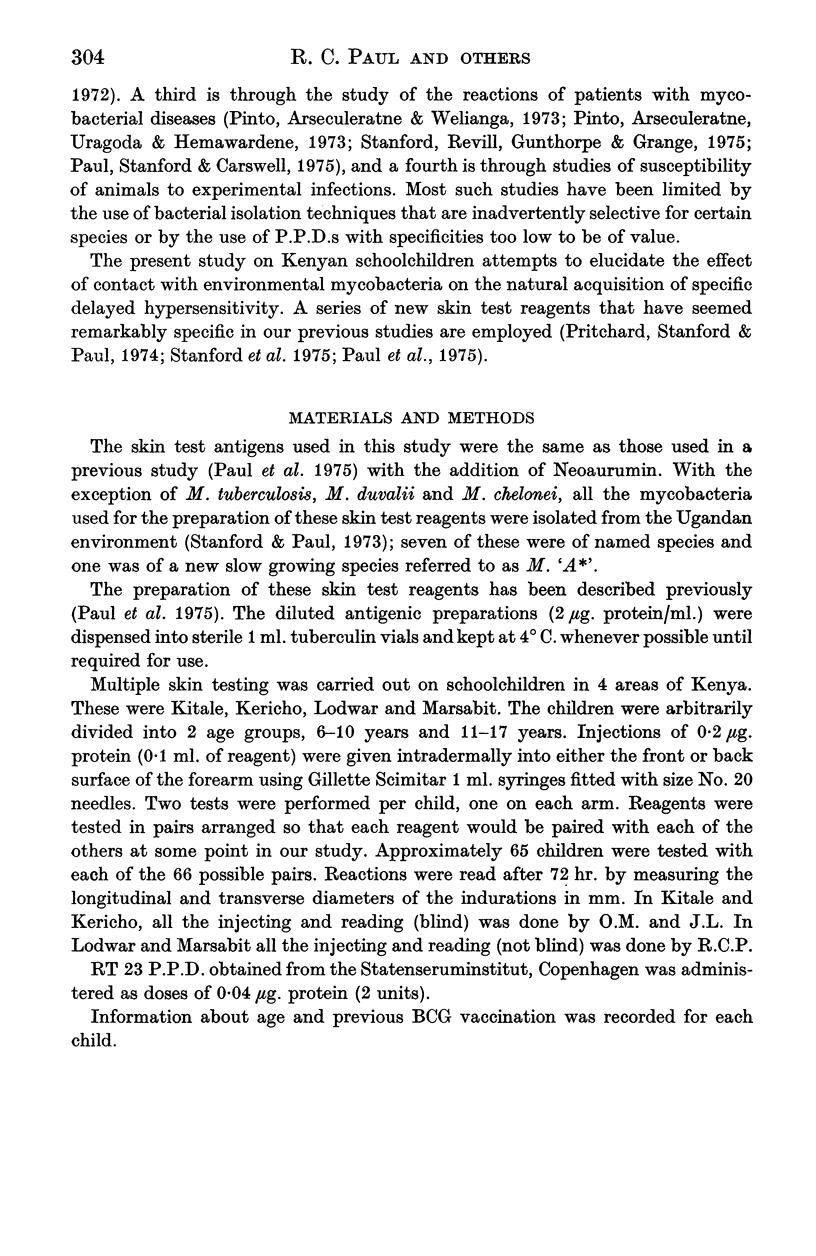
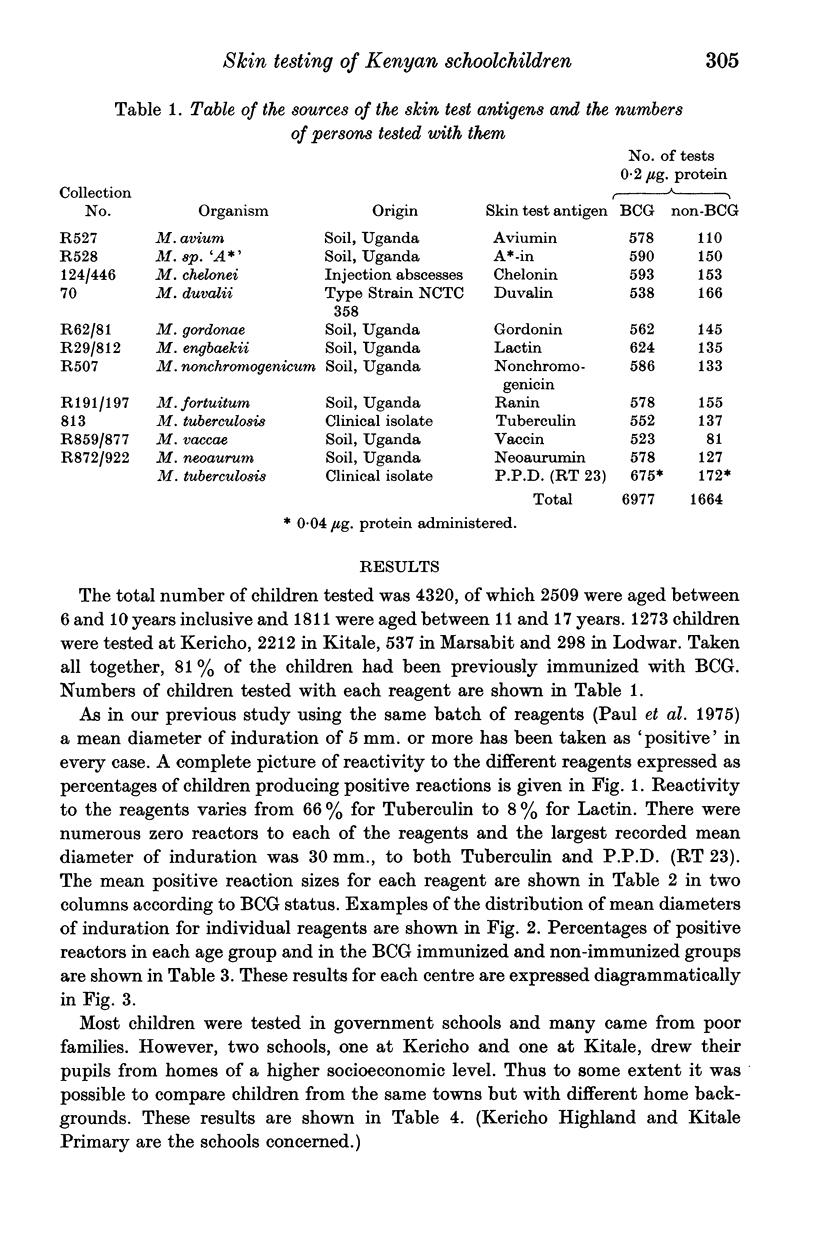
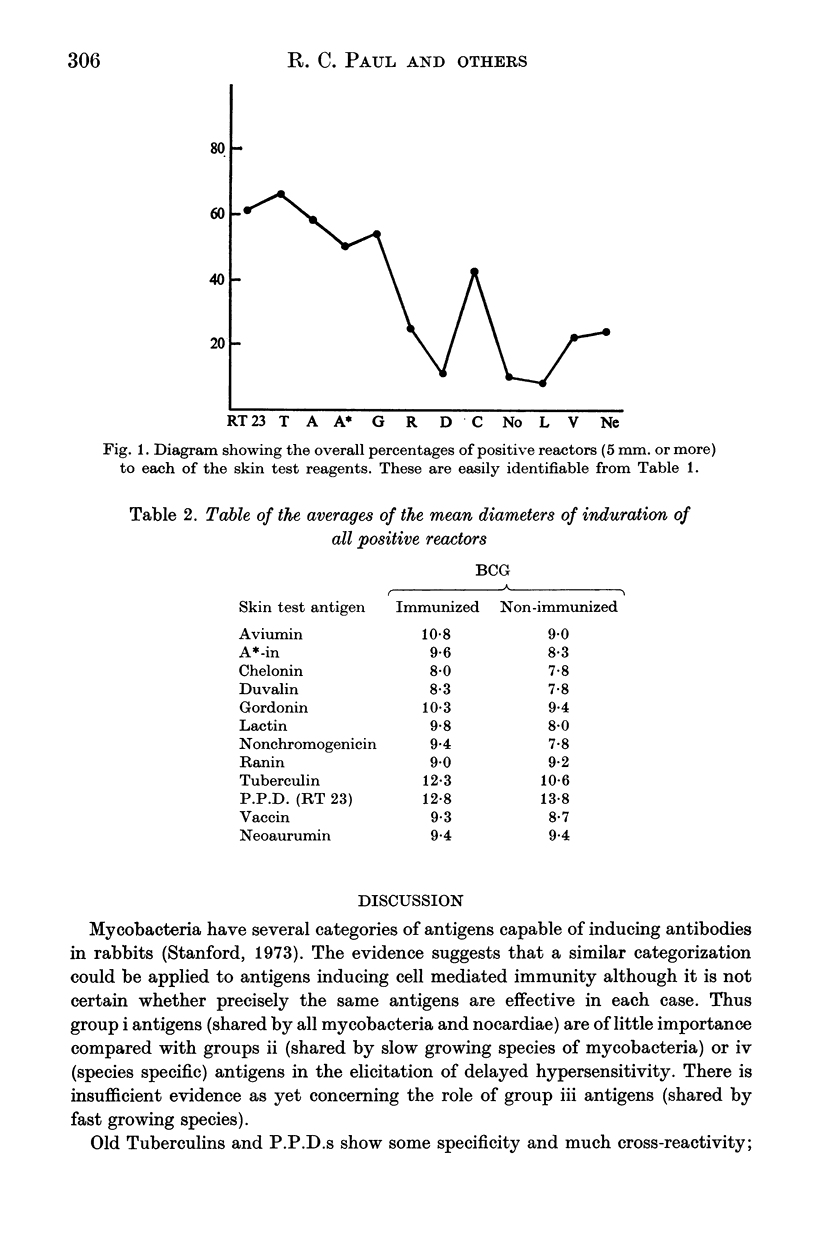
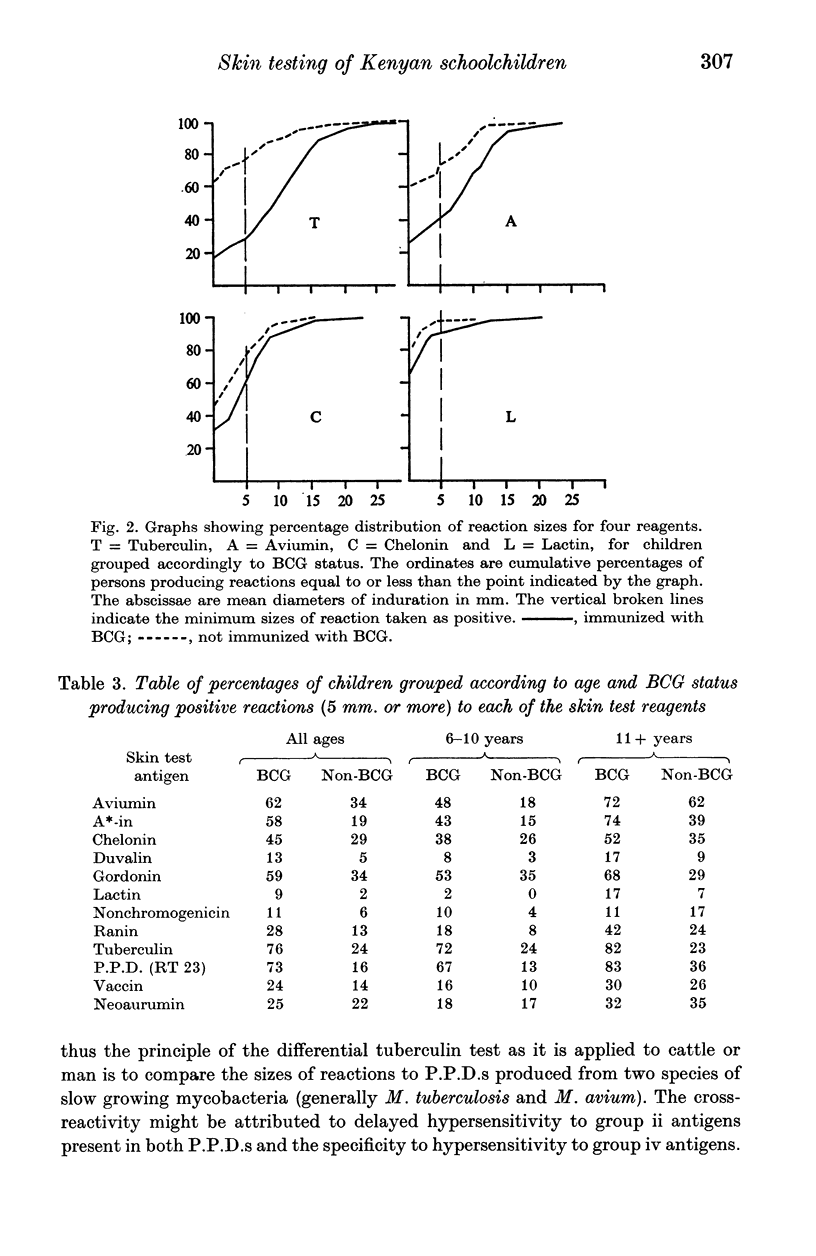
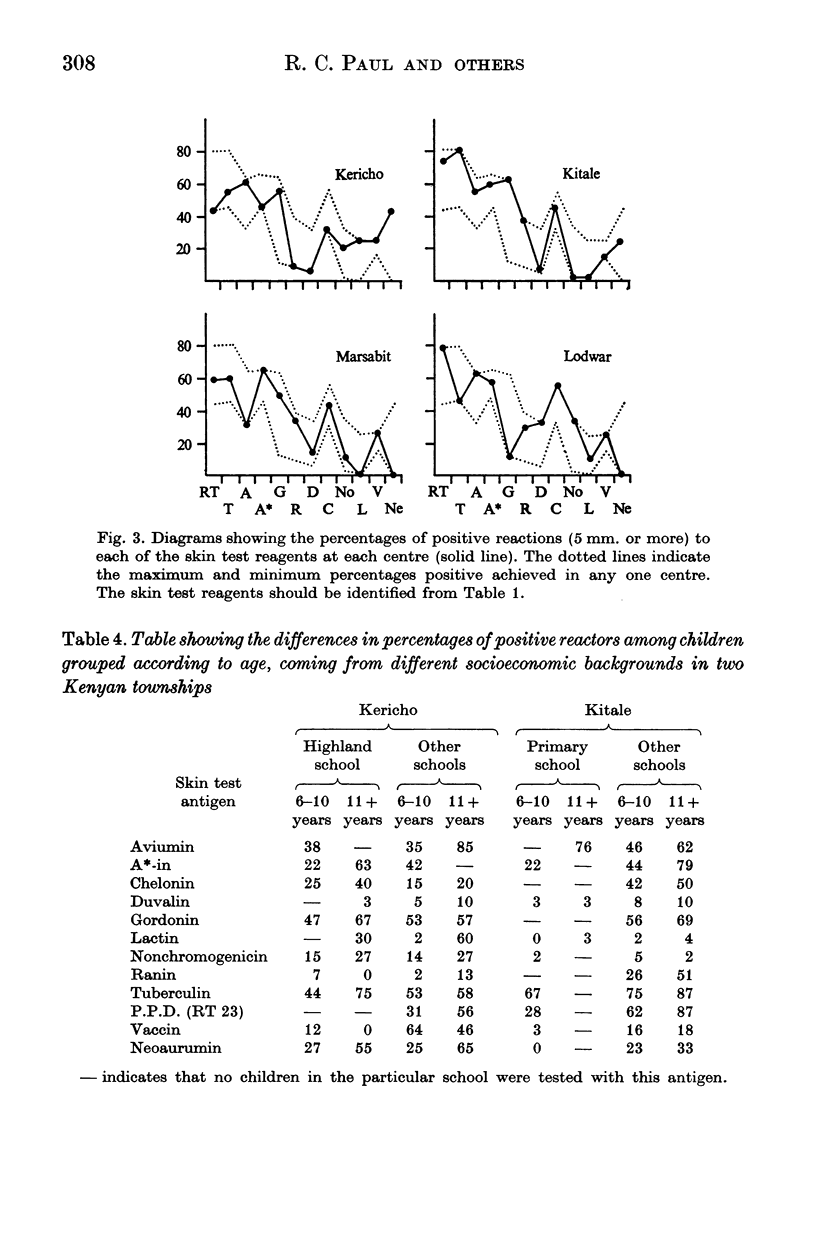
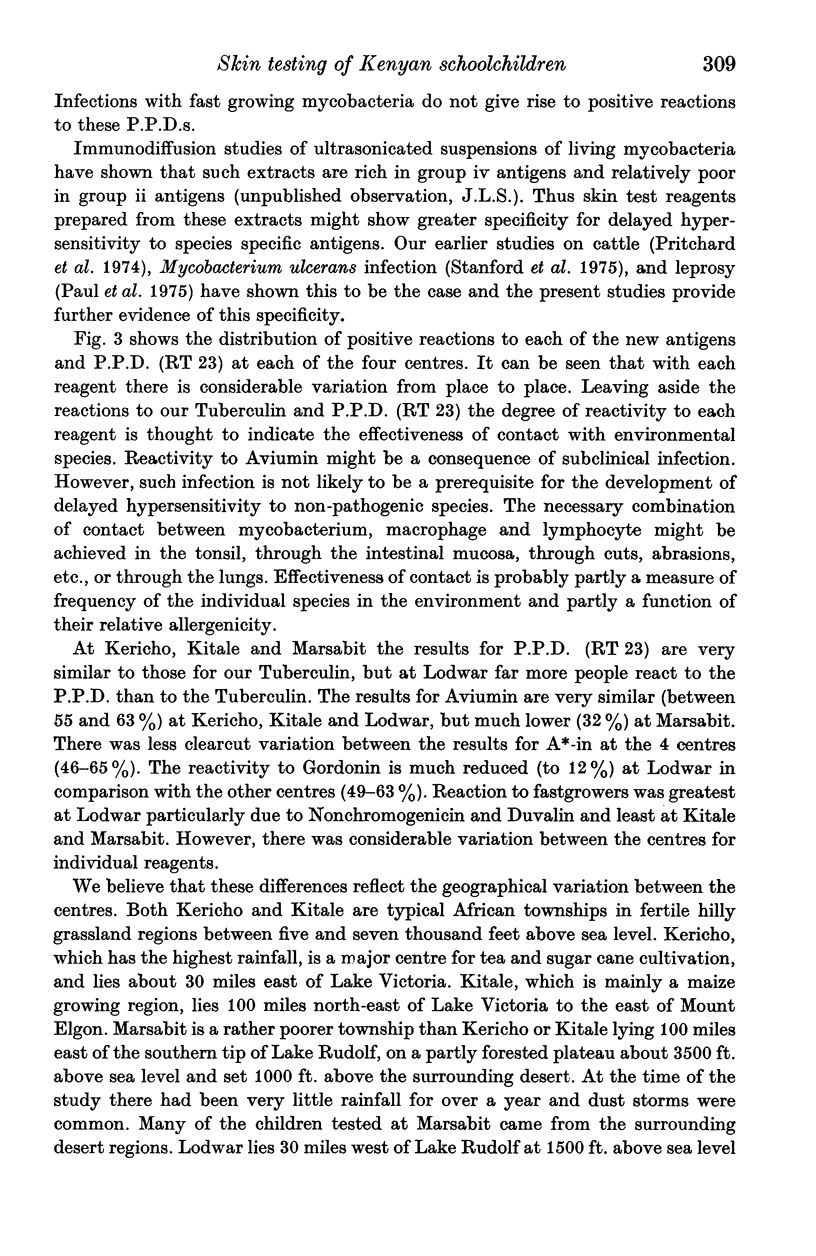

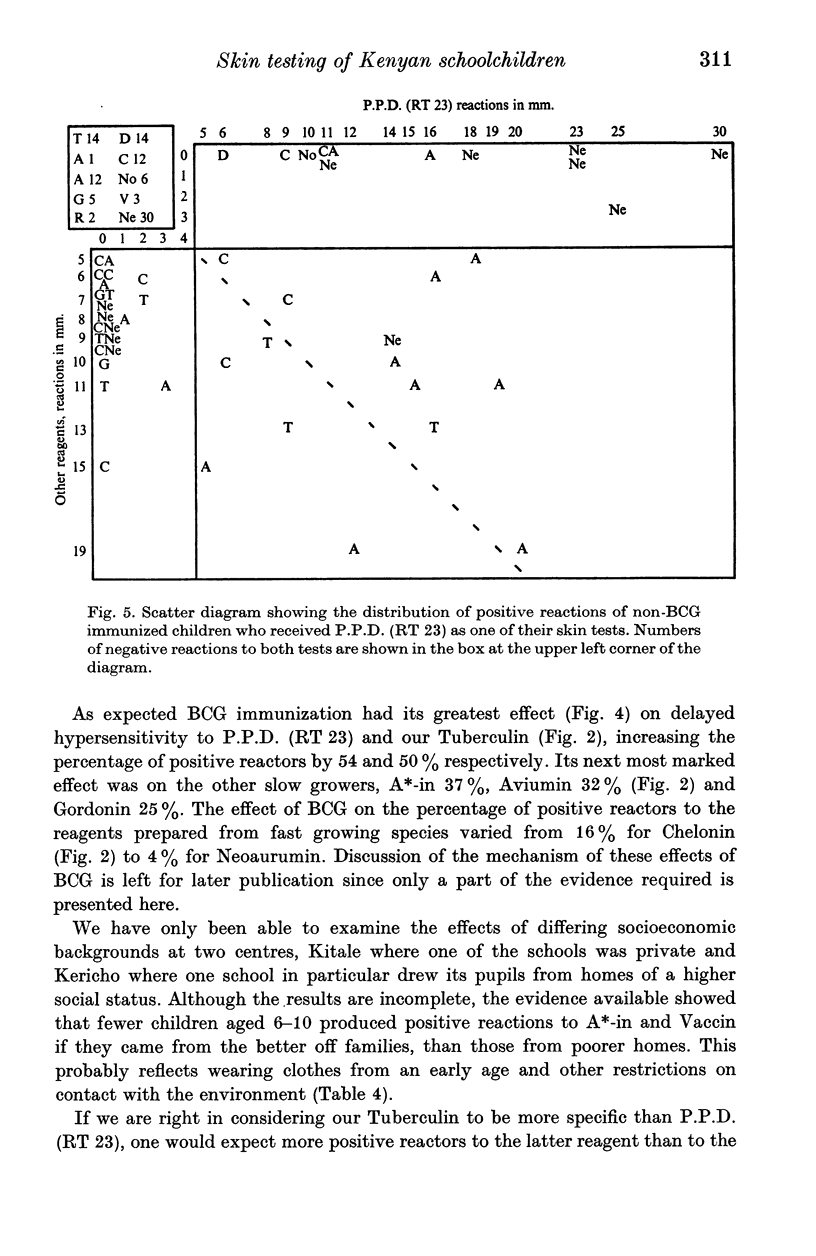
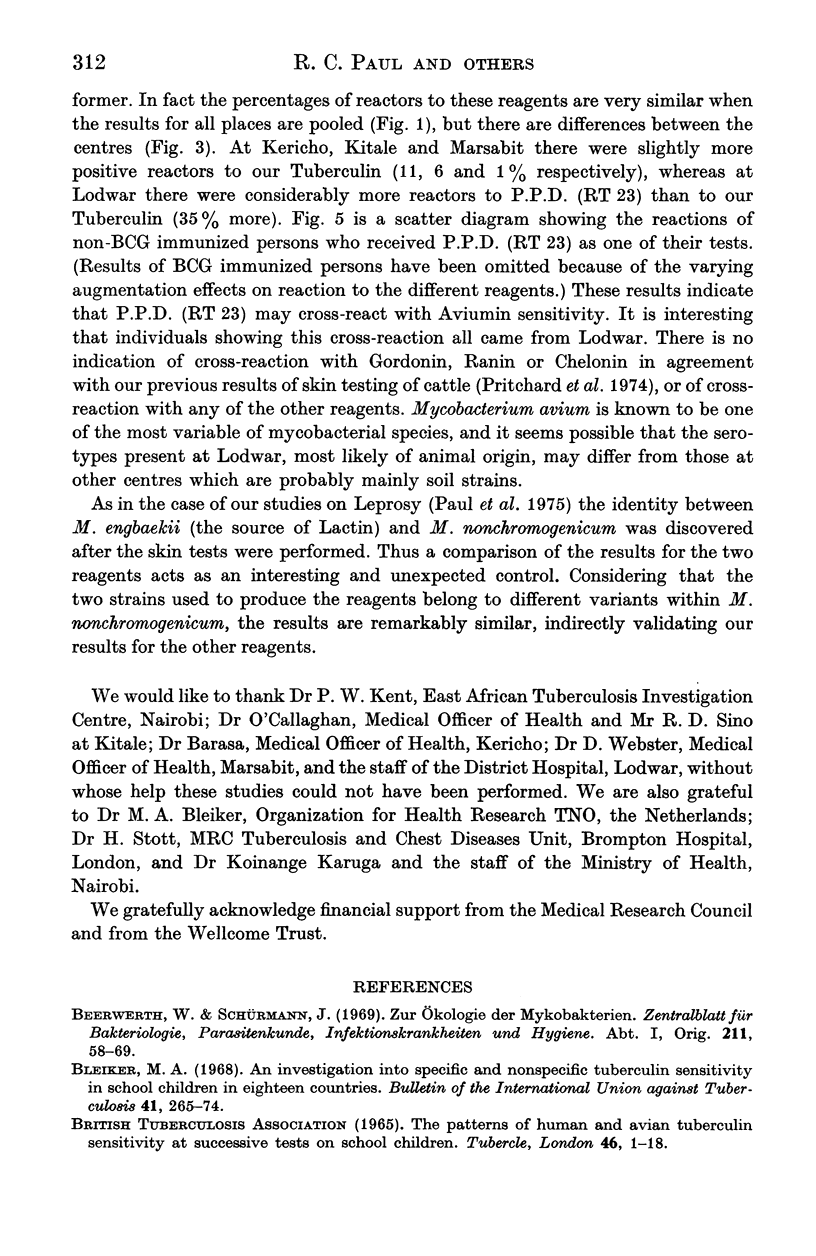

Selected References
These references are in PubMed. This may not be the complete list of references from this article.
- Beerwerth W., Schürmann J. Zur Okologie der Mykobakterien. Zentralbl Bakteriol Orig. 1969;211(1):58–69. [PubMed] [Google Scholar]
- Gordon R. E. The Classification of Acid-Fast Bacteria. J Bacteriol. 1937 Dec;34(6):617–630. doi: 10.1128/jb.34.6.617-630.1937. [DOI] [PMC free article] [PubMed] [Google Scholar]
- Ogunbi O. Differential tuberculin testing in Nigeria. Tubercle. 1969 Dec;50(4):356–358. doi: 10.1016/0041-3879(69)90036-1. [DOI] [PubMed] [Google Scholar]
- Paul R. C., Stanford J. L., Carswell J. W. Multiple skin testing in leprosy. J Hyg (Lond) 1975 Aug;75(1):57–68. doi: 10.1017/s0022172400047069. [DOI] [PMC free article] [PubMed] [Google Scholar]
- Pinto M. R., Arseculeratne S. N., Uragoda C. G., Hemawardene N. M. Differential tuberculin testing in rural populations in Ceylon. Tubercle. 1972 Sep;53(3):182–197. doi: 10.1016/0041-3879(72)90015-3. [DOI] [PubMed] [Google Scholar]
- Pinto M. R., Arseculeratne S. N., Welianga L. V. The differential tuberculin test in leprosy. Lepr Rev. 1973 Mar;44(1):13–21. doi: 10.5935/0305-7518.19730002. [DOI] [PubMed] [Google Scholar]
- Pritchard D. G., Stanford J. L., Paul R. C. A preliminary study of delayed hypersensitivity to Mycobacterium chelonei, Mycobacterium fortuitum (Ranae) and Mycobacterium gordonae in cattle from two areas in Uganda. Br J Exp Pathol. 1974 Aug;55(4):374–383. [PMC free article] [PubMed] [Google Scholar]
- Reznikov M., Leggo J. H. Examination of soil in the brisbane area for organisms of the Mycobacterium avium-intracellulare-scrofulaceum complex. Pathology. 1974 Jul;6(3):269–273. doi: 10.3109/00313027409068997. [DOI] [PubMed] [Google Scholar]
- Stanford J. L. Immunodiffusion analysis--a rational basis for the taxonomy of mycobacteria. Ann Soc Belg Med Trop. 1973;53(4):321–330. [PubMed] [Google Scholar]
- Stanford J. L., Paul R. C. A preliminary report on some studies of environmental mycobacteria. Ann Soc Belg Med Trop. 1973;53(4):389–393. [PubMed] [Google Scholar]
- Stanford J. L., Revill W. D., Gunthorpe W. J., Grange J. M. The production and preliminary investigation of Burulin, a new skin test reagent for Mycobacterium ulcerans infection. J Hyg (Lond) 1975 Feb;74(1):7–16. doi: 10.1017/s0022172400046659. [DOI] [PMC free article] [PubMed] [Google Scholar]
- Stewart C. J., Dixon J. M., Curtis B. A. Isolation of mycobacteria from tonsils, naso-pharyngeal secretions and lymph nodes in East Anglia. Tubercle. 1970 Jun;51(2):178–183. doi: 10.1016/0041-3879(70)90070-x. [DOI] [PubMed] [Google Scholar]


